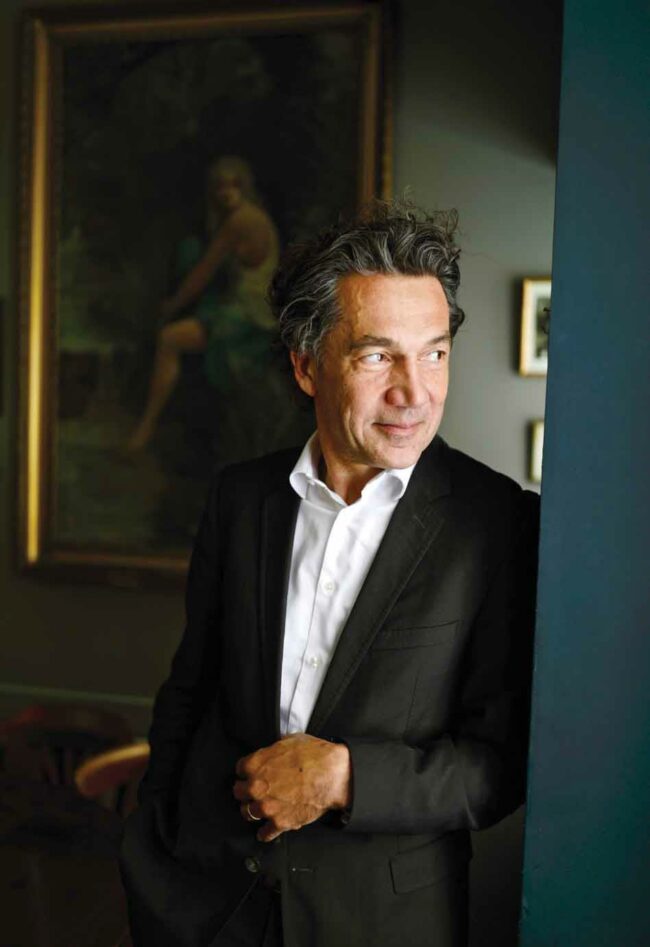🔓 Free access for all on our website.
Jean-Louis is a key figure in Gevrey-Chambertin. With his wife Andrée, he has revived an estate in Riquewihr, Alsace. Their sons Pierre and Louis are joining them. They have their own mind.
IN THIS FAMILY, they talk to one another. This may seem obvious in Burgundy, where the image of the family estate is so strong. And yet, they hear stories of estate purchases, land acquisitions and complicated successions. The arrogant success of the Côte-d’Or is destabilising families. The history of the Trapet family is well documented. Cultivated, in fact, for a good century and a half. You should have seen Jean-Louis, at the Grand Tasting Paris in November 2022, reading with relish, in his clear, slow phrasing, his grandfather’s meticulously photocopied diary. Grand-père Louis was a meticulous man, and his handwriting was meticulous. If you ask Jean-Louis, he can tell you a lot about the Trapet lineage in Gevrey. Louis I, the founder, then Arthur, then Louis II, then Jean, still going strong, from 1950, then Jean-Louis himself, from 1986. He had a free hand in the 1990s and took the opportunity to take his turn at innovation. First, he stopped using weedkillers, then took the plunge into biodynamic viticulture. Timidly in 1995, completely in 1997. In 2003, the heatwave and low yields made it possible to experiment with whole crop harvesting. It became a habit. It was also the year that the Trapet couple took over the family estate of Andrée, née Grayer, in Alsace. At the time, less than two hectares of vines and the only Grand Cru, Sonnenglanz. A life between the two regions, the week in Gevrey, the weekend in Riquewihr. The estate expanded rapidly with the addition of the Sporen, Schlossberg and Schoenenbourg grands crus in 2006. It now covers seventeen hectares and has even added Mambourg to its bow.
TWO CULTURES, ONE FAMILY This duality (or complementarity) of Burgundy and Alsace is the legacy for Pierre and Louis, the two Trapet sons. Inheritance in the truest sense of the word, as the land will revert to them.
And figuratively, what a family passes on to the next generation. Pierre was born in June 1992. Louis in September 1994. Pierre studied business at the Burgundy School of Business in Dijon. The latter took a BTS in viticulture and oenology in Beaune, followed by a diploma at Changins, the Swiss school of viticulture and oenology. Pierre came to work with his parents first, in 2017. They entrusted him with the keys to Alsace. In 2018 and 2019, the two brothers experimented together for the first time, testing their relationship, building shared ambitions and innovating in turn. Like these vines on stakes or these seedlings planted to create a vegetation cover.
NEW PLAYGROUND The idea is to do everything together, but each with his own garden. Pierre is more Alsatian, and more white. Louis is more in Burgundy, more red. Before, there was a two-week difference between the harvests in the two regions. Now they’re virtually synchronised. Pierre insists on the importance of these two origins. “I started out walking in Alsace, not Burgundy”. He also stresses the role of the women in the family. “I live with my maternal grandmother, who lost her sight when I arrived. She has a very strong temperament and a fundamental link with nature. On the Côte de Nuits, nature is civilised. In Alsace, it’s wilder, with the Vosges mountains and the forest. We’ve been nurtured by these two cultures, one Catholic, the other Protestant, one French, the other with Germanic influences. Both make sense. Thanks to Louis’ wife, Justine Bonnetain, the daughter of a Côte de Beaune winegrower, the two brothers took over almost two hectares of the Eric Bonnetain estate when he retired. Lots of small plots in several appellations to do their own thing, from A to Z. Domaine Pierre et Louis Trapet, simply put. Their first 7,000 bottles will go on sale in 2023. With pretty labels designed by Louise Pianetti-Voarick, with interlocking circles of colours. Nine wines in such a small area, including Aligoté vinified in three different ways: classic, macerated and passerillé. They have a plot planted in 1934 in the Sous Châtelet climat in Auxey-Duresses, well known to fans of the grape variety. Lalou Bize-Leroy has hers there. They presented the wines in Paris, with their families, at the end of 2022. Louis took great pleasure in giving the exact geographical details: “The landscape is totally different from Gevrey”. The white is a Saint-Romain from two plot, Le Jarron and La Périère. An Auxey-Duresses, also from two plotss, in Les Fosses and Les Hautés. For the Meursault, the vines are in Les Vireuils. Most of the wine is matured in concrete eggs. “In the reds, Auxey-Duresses and Auxey-Duresses Premier Cru are made from a blend of Les Ecussaux and Les Grands-Champs plotss. There is also a Pommard Les Vaumuriens. As far as the whites are concerned, Pierre is already well on his way with 2020s that have a salty finish. Louis was a little surprised by the maturity of the reds. These two fine minds are never short of ideas. “In 2020, we raised our trellis posts. The shade they cast protects the next row. We’re gaining half a degree of alcohol as a result. Pierre also talked about their electric tractor. “We’re the first to have it. We’re often the first to do things.” These two have not finished surprising us, innovating, writing the next chapter in the family novel.


























